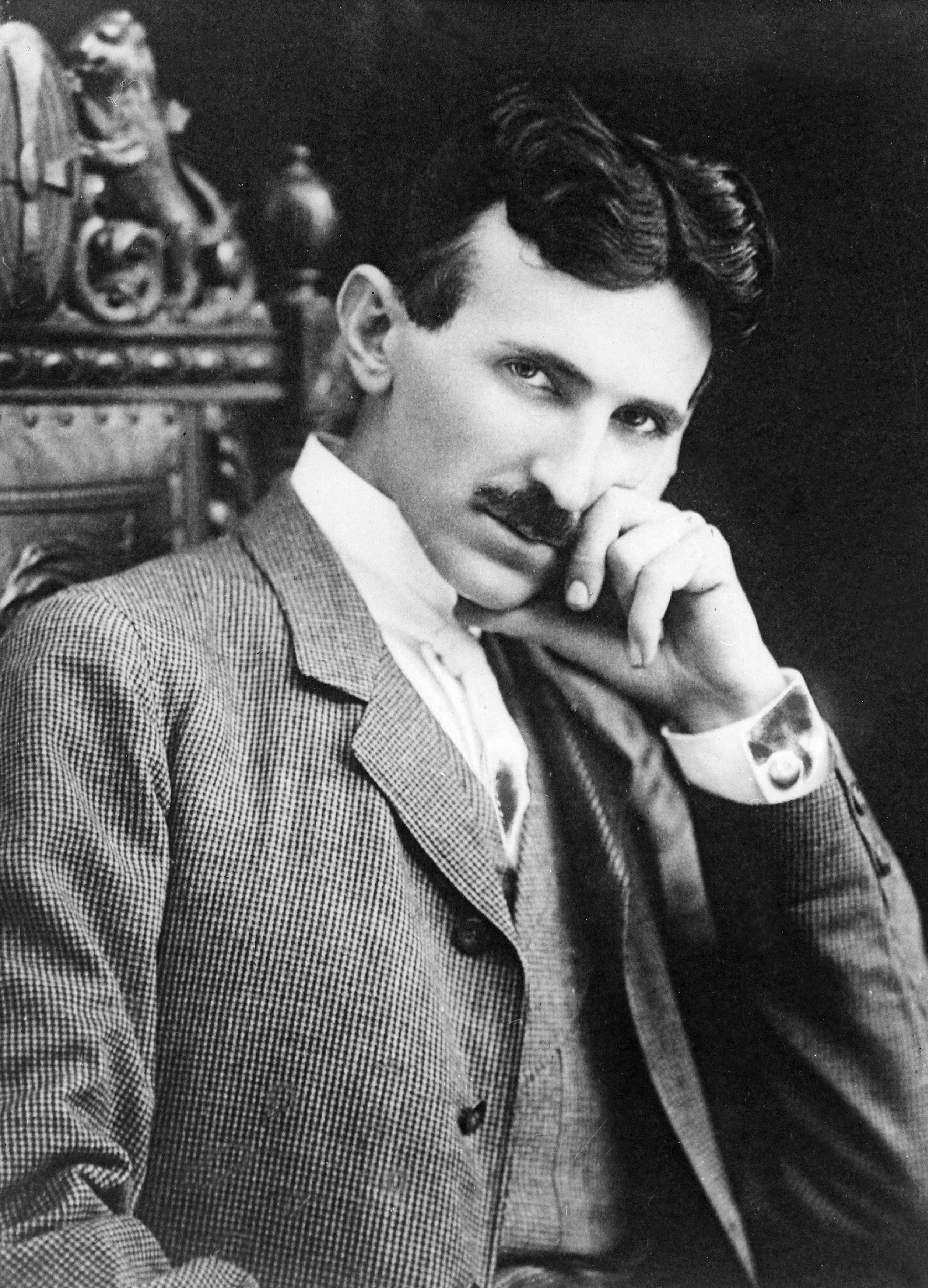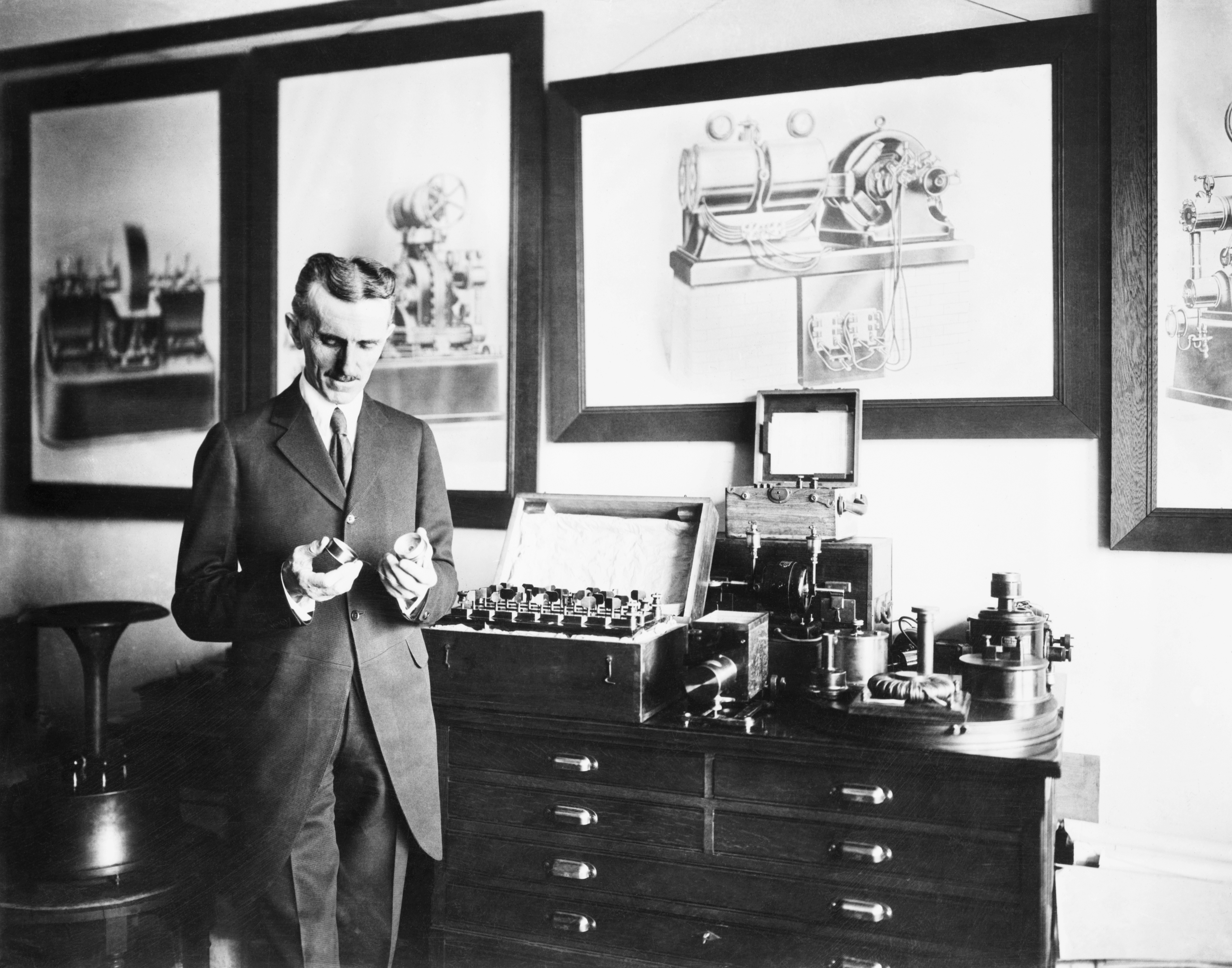Tesla, Nikola (1856-1943), was a pioneer in electrical technology. Tesla received more than 100 patents for a variety of inventions. But he is best-known for his development of systems that produce and use alternating current (AC). Alternating current is electric current that reverses direction regularly, many times a second. To this day, systems developed by Tesla remain the heart of electric power operations in most of the world.

Early life.
Tesla was born on July 9 or 10, 1856, in Smiljan, Austria-Hungary (now in Croatia). His parents were Serbian. He studied engineering at two institutions in Austria-Hungary. Those educational institutions were Graz Technical University (now in Austria) and the University of Prague (now in the Czech Republic). Tesla left the University of Prague in 1880, without a degree, after his father died. He then worked for a short time for Austria-Hungary’s telephone system in Budapest (now in Hungary). In 1882, Tesla moved to Paris. There he worked for the Continental Edison Company.
The alternating-current system.
While at Graz Technical University, Tesla had seen a demonstration of a generator run as a direct current (DC) motor. Direct current is electric current that flows in only one direction. During the demonstration, the brushes and the commutator of the motor sparked violently. The brushes are devices that conduct the current in a DC motor. The commutator continually reverses the current so that the motor continues to rotate in one direction. Tesla believed a motor without a commutator could be devised. In 1881, while walking in a park, Tesla got an idea for a simple way to produce such a device. In 1883, while on assignment for Continental Edison in Strasbourg, France, Tesla used his spare time to build his first polyphase (out-of-step) AC motor. In such a motor, coils are arranged so that when out-of-step alternating currents energize them, the resulting magnetic field rotates at a predetermined speed. See Electric motor. 
In 1884, Tesla left Europe for the United States. He went to work for the inventor Thomas Edison. Edison respected the young engineer. But the American inventor was a strong supporter of DC. As a result, he had little interest in Tesla’s AC generation, transmission, and motor system. Tesla quit working for Edison after one year.
In 1887, Tesla started the Tesla Electric Company in New York City. There, he produced three complete systems of AC machinery. For each system, Tesla designed generators to supply the current, motors that use the current, and transformers to raise and lower voltages. He also invented a variety of devices to automatically control the machinery. Tesla received patents for his polyphase system of AC generators, transformers, and motors in 1888. That same year, he sold his patents to U.S. industrialist George Westinghouse. Tesla then worked at the Westinghouse Electric Company in Pittsburgh for a year to help develop commercial uses of the AC system. Tesla became a U.S. citizen in 1889.
In 1893, Westinghouse used Tesla’s AC system to light the World’s Columbian Exposition in Chicago. In 1895, Westinghouse’s Niagara Falls Power Project used Tesla’s generators and motors to harness the power of the waterfall. The project produced AC power and delivered it to Buffalo, New York, 22 miles (35 kilometers) from the falls.
Other inventions.
In 1891, Tesla invented the Tesla coil. The coil is a type of high-frequency transformer that is still used in radio and television transmission. He experimented with wireless control. In 1898, he demonstrated a radio-controlled boat he had invented. In 1899, Tesla created artificial lightning in one of his laboratories. Tesla’s other achievements include early experiments with X rays and radar, and with aircraft design. He also invented neon and fluorescent lighting.
Tesla died on Jan. 7, 1943. Later that year, the Supreme Court of the United States invalidated most of the patents held by the Italian inventor Guglielmo Marconi for radio communications equipment. It gave Tesla credit for the invention of the radio. The credit was based on various patents in Tesla’s name that predated Marconi’s. In 1956, in honor of Tesla’s many engineering achievements, the scientific community named a unit of magnetic field strength the tesla. In 1975, Tesla was inducted into the National Inventors Hall of Fame.
